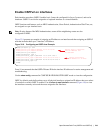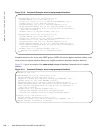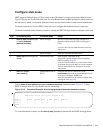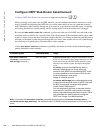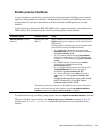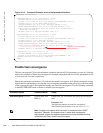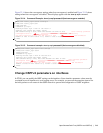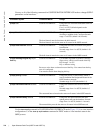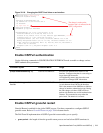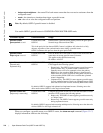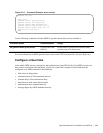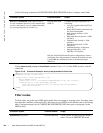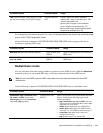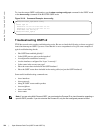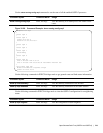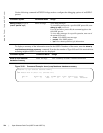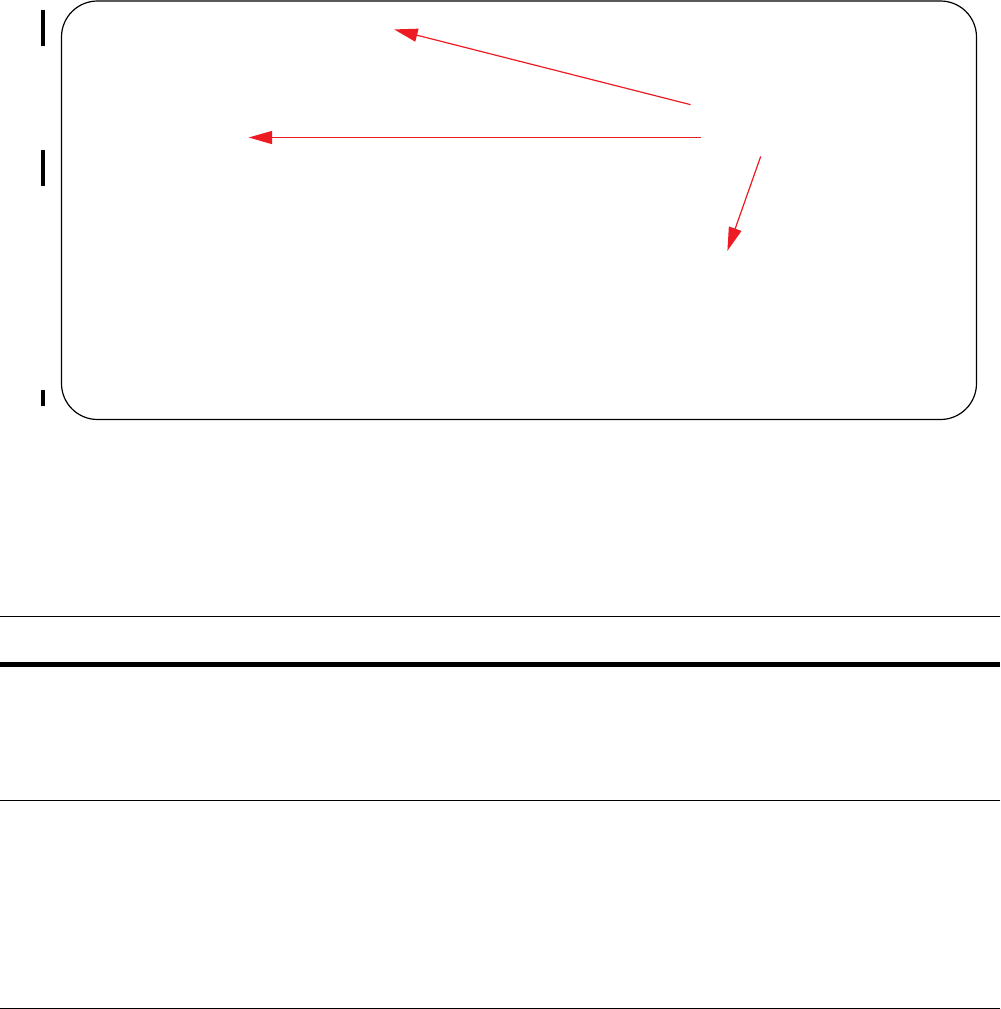
Open Shortest Path First (OSPFv2 and OSPFv3) | 717
Figure 32-16. Changing the OSPF Cost Value on an Interface
Enable OSPFv2 authentication
Use the following commands in CONFIGURATION INTERFACE mode to enable or change various
OSPF authentication parameters:
Enable OSPFv2 graceful restart
Graceful Restart is enabled for the global OSPF process. Use these commands to configure OSPFv2
graceful restart. Refer to Graceful Restart on page 700 for feature details.
The Dell Force10 implementation of OSPFv2 graceful restart enables you to specify:
•
grace period—the length of time the graceful restart process can last before OSPF terminates it.
Command Syntax Command Mode Usage
ip ospf authentication-key key CONFIG-INTERFACE Set clear text authentication scheme on the
interface. Configure a key that is a text string no
longer than eight characters.
All neighboring routers must share the same
password to exchange OSPF information.
ip ospf auth-change-wait-time
seconds
CONFIG-INTERFACE Set the authentication change wait time in
seconds between 0 and 300 for the interface.
This is the amount of time OSPF has available to
change its interface authentication type. During
the auth-change-wait-time, OSPF sends out
packets with both the new and old authentication
schemes. This transmission stops when the
period ends. The default is 0 seconds.
FTOS(conf-if)#ip ospf cost 45
FTOS(conf-if)#show config
!
interface GigabitEthernet 0/0
ip address 10.1.2.100 255.255.255.0
no shutdown
ip ospf cost 45
FTOS(conf-if)#end
FTOS#show ip ospf 34 interface
GigabitEthernet 0/0 is up, line protocol is up
Internet Address 10.1.2.100/24, Area 2.2.2.2
Process ID 34, Router ID 10.1.2.100, Network Type BROADCAST, Cost: 45
Transmit Delay is 1 sec, State DR, Priority 1
Designated Router (ID) 10.1.2.100, Interface address 10.1.2.100
Backup Designated Router (ID) 10.1.2.100, Interface address 0.0.0.0
Timer intervals configured, Hello 10, Dead 40, Wait 40, Retransmit 5
Hello due in 00:00:06
Neighbor Count is 0, Adjacent neighbor count is 0
FTOS#
The change is made on the
interface and it is reflected in the
OSPF configuration



